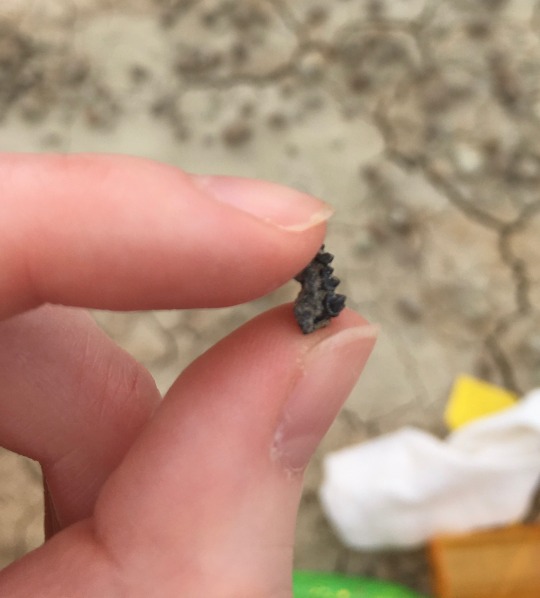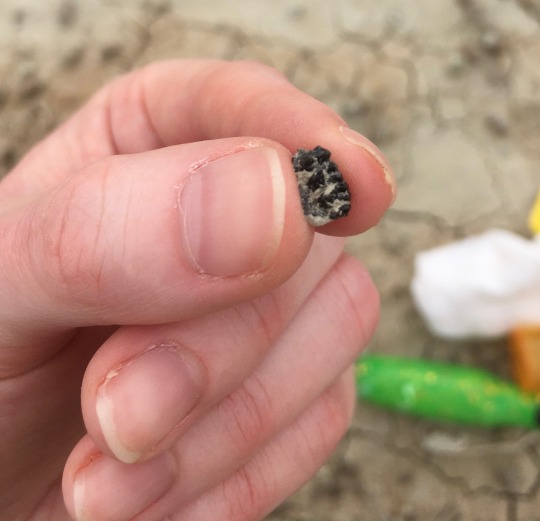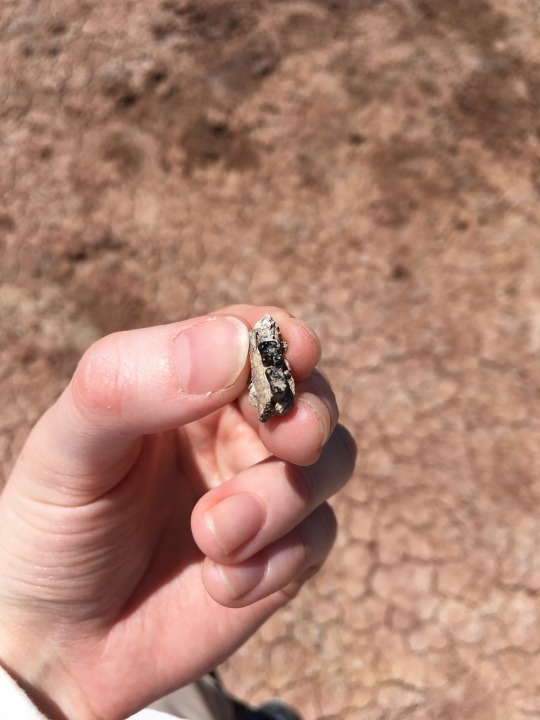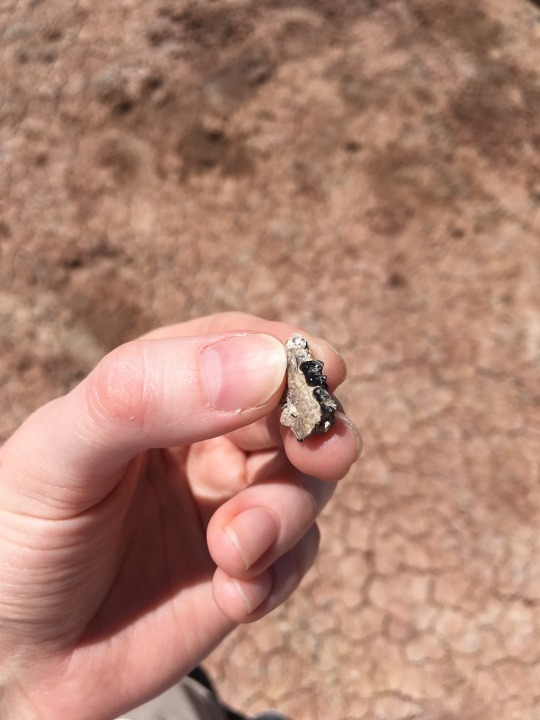#we come from such tiny tarsier like beginnings…..
Explore tagged Tumblr posts
Text
inspired by @kaijutegu ‘s post: another little primate grandma!!! this teilhardina was my first omomyid (and a maxilla at that!!) and i will always love showing off where we came from to anyone who will listen. we were so small once. and look at those sharp bug-crunching teeth!


also a cantius to round out the other side of the primate tree, i do love an adapid as well and this guy was the first jaw i ever found!


#i of course did not getto keep these guys but im glad to have the pics#we come from such tiny tarsier like beginnings…..
61 notes
·
View notes
Text
A Journey to the Philippines
The Philippines, an archipelago nestled in the heart of Southeast Asia, beckons adventurous souls with its enchanting landscapes, vibrant culture, and warm hospitality. From the bustling streets of Manila to the tranquil shores of Palawan, the country offers a tapestry of experiences that leaves travelers bewitched and mesmerized. Join me on a journey as we embark on an unforgettable exploration of this tropical paradise, where each step reveals a new chapter in the story of the Philippines. Part 1: The Enchanting Capital - Manila Our adventure begins in the vibrant metropolis of Manila, a city that gracefully juxtaposes tradition and modernity. Wander through the historic walled city of Intramuros, where Spanish colonial charm harmonizes with centuries-old churches and plazas. Delight in the tantalizing aroma of Filipino street food as you traverse bustling markets, sampling delicacies like adobo and halo-halo. Beyond the urban hustle, find tranquility at the Manila Baywalk, where the breathtaking sunset paints the sky with hues of gold and crimson. Embrace the vibrant energy of the city, and as night falls, immerse yourself in the lively nightlife that fills the streets with laughter and music. Part 2: Paradise Unveiled - Palawan Leaving the city behind, we journey to Palawan, the crown jewel of the Philippines' natural beauty. Palawan's allure lies in its pristine beaches, crystal-clear waters, and limestone cliffs that seem to touch the sky. Coron's captivating lagoons and shipwrecks invite adventurous souls to don their snorkels and dive into a marine wonderland, discovering an underwater world teeming with life. A visit to El Nido unfolds a tapestry of stunning landscapes, with hidden beaches and secret lagoons accessible through limestone crevices. Here, time seems to slow down, allowing you to savor each breathtaking moment surrounded by nature's awe-inspiring creations. Part 3: Cultural Haven - Bohol Our journey continues to Bohol, where nature and culture intertwine in perfect harmony. Witness the iconic Chocolate Hills, a geological marvel that transforms into a rich, cocoa hue during the dry season, adding an artistic touch to the island's landscape. Explore the Loboc River on a floating restaurant and savor a traditional Filipino feast as you cruise past lush forests and charming villages. Encounter the adorable tarsiers, tiny primates with massive eyes, in their natural sanctuary, and gain a deeper appreciation for the country's diverse wildlife. Conclusion: The Philippines, a captivating medley of enchanting destinations, cultural wonders, and warm-hearted people, leaves an indelible mark on the hearts of those who venture to its shores. As our journey through this tropical paradise comes to an end, we bid farewell with memories of sun-kissed beaches, smiling faces, and a profound sense of gratitude for having experienced the Philippines' magical charm. Indeed, the Philippines isn't just a destination; it's an unforgettable odyssey that inspires wanderlust and ignites a passion for exploration. So, pack your bags, embark on this adventure, and let the Philippines unveil its many secrets, inviting you to create your own chapter in the story of this enchanting archipelago.
2 notes
·
View notes
Note
How it is Six fading away from the world when by all accounts in game she’s completely healthy and normal? Like she doesn’t show any signs of anything abnormal whatsoever besides her turning into a monster at the signal tower and experiencing hunger at the secret ending where she’s pointed to go to the Maw? What does it mean that she’s fading? It is metaphorical of how she’s growing weak and ill or it is literal where she’s going to disappear into nothing?
I’ve screenshot it before but for anyone just joining us, this is what Anon is referring to from the BandaiNamco official page for LN2:

[Awaken Your Inner Child To Save Six From The Darkness. Six is fading from this world and her only hope is to guide Mono to the Signal Tower. In this world of nightmares, you are her only beacon of hope.]
Unfortunately nonny she is quite sick in the game. I, like many other people, had assumed that it was simply a cold since she coughs and shivers, and it doesn’t seem like the Hunger is affecting her quite yet (whether or not that’s because the Hunger in and of itself is a result of being sucked into the Transmission or if it’s simply because it’s in a dormant state remains to be seen).
However, I was going through the artbook yesterday, which is a set of images deliberately curated by Tarsier for us to give us insight into the development of the game

This recontextualizes the entire game, because from the official description, this particular piece of art may not have been an actual scene in the game, but definitely remained in the story--Six is dying.
This is early concept art for the game, as shown by Mono’s original character design with his adorable little button-up, but this is the only thing I’ve found from all the tiny scraps Tarsier has given us that could possibly relate to the official description of the game. The description and the game itself seem to be telling two completely different stories but when you start to examine the pieces individually, a story does begin to emerge. Something happened to Six that is killing her. “The Darkness” in the title makes me think it’s the Hunger but until I find more solid evidence I’m not going to say anything definitively. In any case, the solution to her problem lies in the Signal Tower. Whether it’s just escaping from the world that’s killing her or if there is something deeper there, I don’t know, but either way, she can’t make it there alone and so at the point when she and Mono team up initially, I assume some sort of conversation happens that we can’t hear and together they start to make their way to the Signal Tower.
I don’t know. It’s one of the most frustrating components of the lore, but it does also make me think that there is more to come.
#asked and answered#little nightmares#little nightmares 2#I'm doing a deep-dive into the twitter right now to see if I can find some new answer to this#will return with results
27 notes
·
View notes
Note
Do you have any basic, common facts that are still amazing and weird to you when you think about it? For me it's microscopic things... the very thought of something SO small, we cannot see them without special viewing equipment!
The fact that everything we can see around us is made of protons, neutrons and electrons in different combinations. Three basic “building blocks” are enough to create everything as diverse as a storm cloud, Boris Johnson, a computer and the planet Neptune, and each one of those basic ingredients is identical to any other one. Swap every proton in my body with protons from the Andromeda Galaxy and everything would be exactly the same!
On a similar vein, the fact that atoms are so small and numerous that every breath you inhale contains atoms from everyone who has ever lived, and every breath you exhale will eventually make its way into everyone who will ever live. When you breathe in, there are more molecules of oxygen and nitrogen in your lungs than stars in the observable Universe.
The hydrogen in our bodies was made from protons and electrons not long after the Big Bang at the beginning of the Universe. All our other elements were built inside stars and released into space to form new generations of stars and planets when those stars exploded. We are all, literally, made out of stardust. (Although you could look at it and say we’re all made of nuclear waste too…)
Although we weren’t human, in a sense we’ve been here since the beginning of the Universe - first as subatomic particles, then hydrogen and helium gas, then as atoms in stars, then as grains of dust orbiting the newborn Sun, then as clumps of dirt or air or water on Earth, our atoms cycling through countless animals and plants and microbes and through the air, sea and land on continents that haven’t existed for countless millennia until finally coming together as us for a very brief while before drifting off to become something else again. In this sense we are all the same age - 13.8 billion years old - and we will never die, just continue being different arrangements of matter and energy throughout eternity.
We’re literally related to everything alive on Earth. We’re close cousins of each other, as every human being alive today is descended from a common ancestor a few tens of thousands of years ago. We’re more distant cousins of chimpanzees and bonobos, sharing a common ancestor about 6 or 7 million years ago; more distant cousins yet of gorillas, then orang-utans, then gibbons, Asian and African monkeys, South American monkeys, tarsiers, lemurs, tree shrews… other mammals… even further back, reptiles and birds… amphibians… fish… other animals… single-celled eukaryotes, fungi and plants… and ultimately we share a common ancestor with the simplest bacteria who lived around 3.5 billion years ago when Earth was only a billion years old. We are all cousins!
The Himalayas are made of marine limestone and contain shells of sea creatures. They were once the floor of a tropical sea, before being caught between India and Asia and thrust up into the highest mountains on Earth. Britain was at one point under several kilometres of ice; was a tropical reef habitat submerged underwater; and was a densely forested temperate woodland at different parts of its history. Mountains eventually wear down; new mountains arise; continents drift. Earth is constantly changing and the planet we live on now is an alien planet compared to Earth two billion years ago.
Nearly all of the mass of an atom is contained in a very, very tiny nucleus at the centre, about 10,000 to 100,000 times smaller in radius than the atom as a whole. Imagine the nucleus as being like a pea in the middle of a football stadium. Then imagine 99.9% of the mass of that football stadium - all the furniture, walls, the pitch, etc. - crushed into that pea, with just a few scattered chairs remaining outside it. That’s how dense nuclei are, and how empty atoms are. Matter is mostly made of nothing. If you could squeeze all the electrons in all our atoms down into our nuclei, the entire human species could fit into a sugar cube.
Time and distance are not absolutes but differ from one observer to another, depending on how fast they’re travelling. If a pair of twins celebrate their birthday together on Earth before one flies off on a journey at 99% of the speed of light, the travelling twin could return after a year away to find the stay-at-home twin has experienced seven years. This effect is very small at slow speeds, but GPS calculators still have to take it into account when working out where you are in relation to the satellites. Distances also shrink the faster you go, and you behave as if you’ve become heavier. At the speed of light itself, time would come to a stop and all distances would shrink to zero - although you could never actually get up to the speed of light, since you’d be infinitely heavy and need an infinite amount of energy to get up to that speed. The only way you can travel at the speed of light is if you have no mass to start with - like light itself.
All the different forces in nature are actually just four different forces - gravity, electromagnetism, the strong and weak nuclear forces. The two nuclear forces are only relevant at very tiny scales (like the nucleus of an atom), so the only forces that shape our everyday world are gravity and electromagnetism. Obviously the electric and magnetic forces are examples of electromagnetism. But all the “other” familiar forces you can think of - friction, air resistance, contact forces, buoyancy, tension - are all caused by atoms and molecules in close contact, and the electrical repulsion between their outer electron clouds - so they’re all just electricity in disguise! (And atoms and molecules never actually “touch,” by the way - they get very close, but the electrical repulsion between electron clouds prevents them from being squeezed into one another. When you sit on a chair or stand on the floor, you’re actually levitating a tiny fraction of a nanometre above it!)
The dinosaurs dominated life on Earth for so long that Tyrannosaurus rex is closer in time to us than to Stegosaurus. And speaking of dinosaurs, they’re not quite dead - birds are their direct descendants, and it still amazes me that the pigeons I see in my garden are living, breathing dinosaurs. Jurassic Park is real!
You have about 100 trillion cells in your body - only around 10 trillion of them are human. The rest are the bacteria that share your body with you and are essential for keeping you healthy. But because bacterial cells are much smaller and lighter than human cells, they contribute only a small fraction to your body weight.
I still find it fascinating sometimes that there are invisible colours of light out there, that our eyes can’t see but our communications devices can make good use of. There’s really no difference between radio waves, microwaves, infrared radiation, visible light, ultraviolet radiation, X-rays and gamma rays except their frequency - all the others are literally invisible colours of light!
Speaking of colours, each individual atom is set up to emit or absorb very specific colours of light. In a solid, liquid or a dense gas, the atoms are closely packed together and interacting, which smears out the possible range of colours they can emit or absorb into a broad, continuous spectrum. But for a not very dense gas made up of individual atoms or molecules quite far apart from each other, the atoms and molecules absorb or emit only those specific colours. So what? Well, that means we can look carefully at the spectrum of light emitted by other stars or absorbed by the atmospheres of other planets and look at the pattern of which colours are absorbed to be able to tell what atoms and molecules are there. We can tell the composition of another world without even having to go there - just by looking at the colours of light in its spectrum! Maybe one day we’ll find substances in the atmosphere of a distant planet this way that conclusively show the existence of life on that planet. All by looking at its light!
DNA. A double helix made up of four basic kinds of molecules can code for every living thing on the planet, from petunias to porcupines to people, like an amazing computer program that’s written itself over billions of years through trial and error. Isn’t that bizarre? A simple string of four different molecular bases is enough to account for the differences between you and the apple you ate yesterday - and you both run the same code. But then, that’s not really surprising when you consider the previously-mentioned fact that we’re distant relatives!
Consciousness is a thing. That’s just weird, and it gets more baffling the more we think about it. Why am I aware of my existence and experiencing things when a rock - as far as we know - doesn’t? How does that process work exactly? It’s… something to do with the brain? But that’s pretty much as far as we’ve got. What is this thing we call consciousness?
But the most amazing fact of all is that the Universe is something we can understand. We - hairless, upright apes who were running around on the savannah trying not to get eaten just a few tens of thousands of years ago - can measure the age of the Universe, the size of the atom, the composition of distant stars, and can look back through time to find out how our planet was formed, what’s under our feet, etc. As far as we know we’re the only species that can do this. We’re not separate from the Universe, we’re a part of it, as much as your cells and organs are a part of you. We are the Universe’s eyes, ears and brain. We are the Universe able to look at itself, think about itself, and understand itself.
I could go on for years but I think that’s enough for now!
2 notes
·
View notes